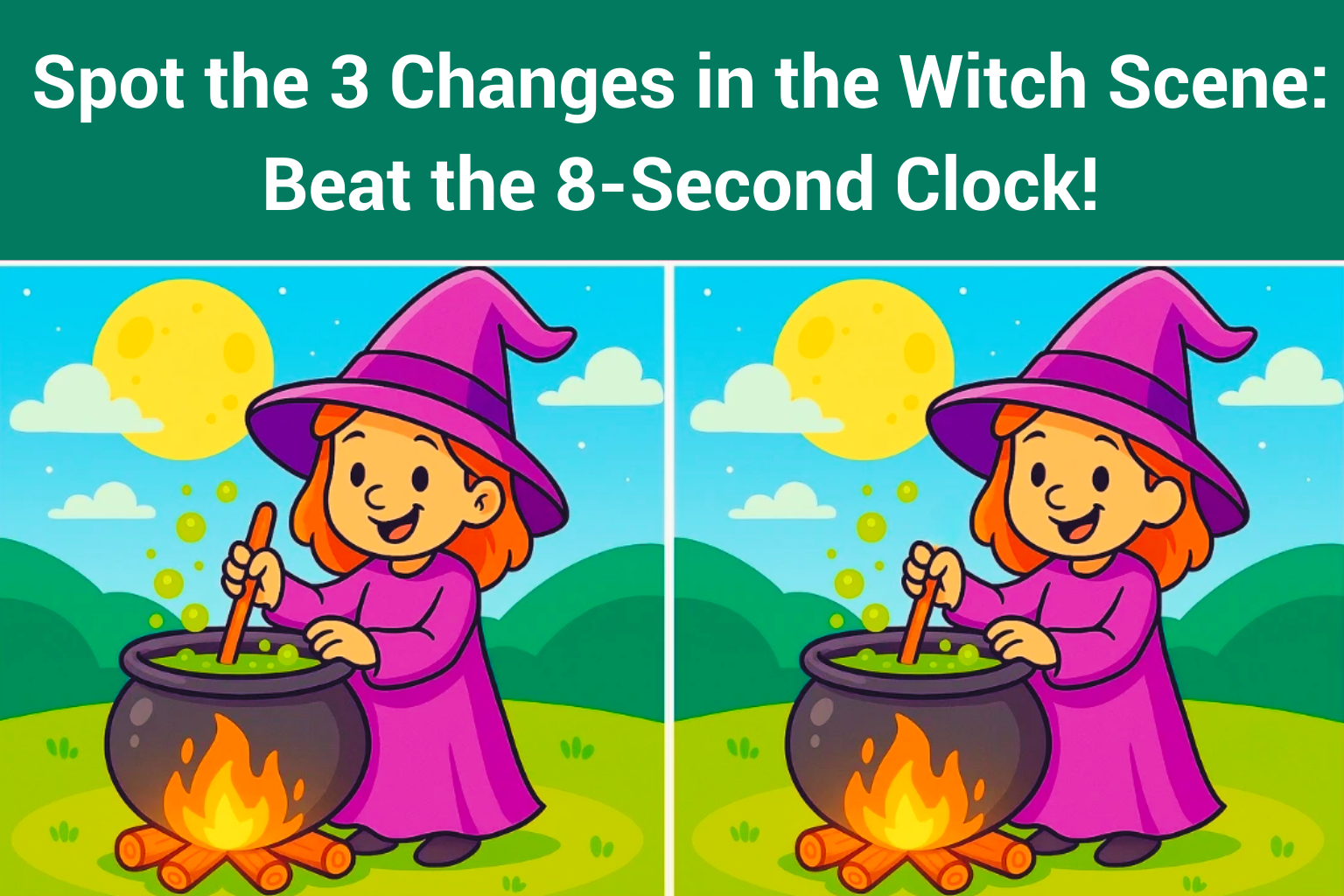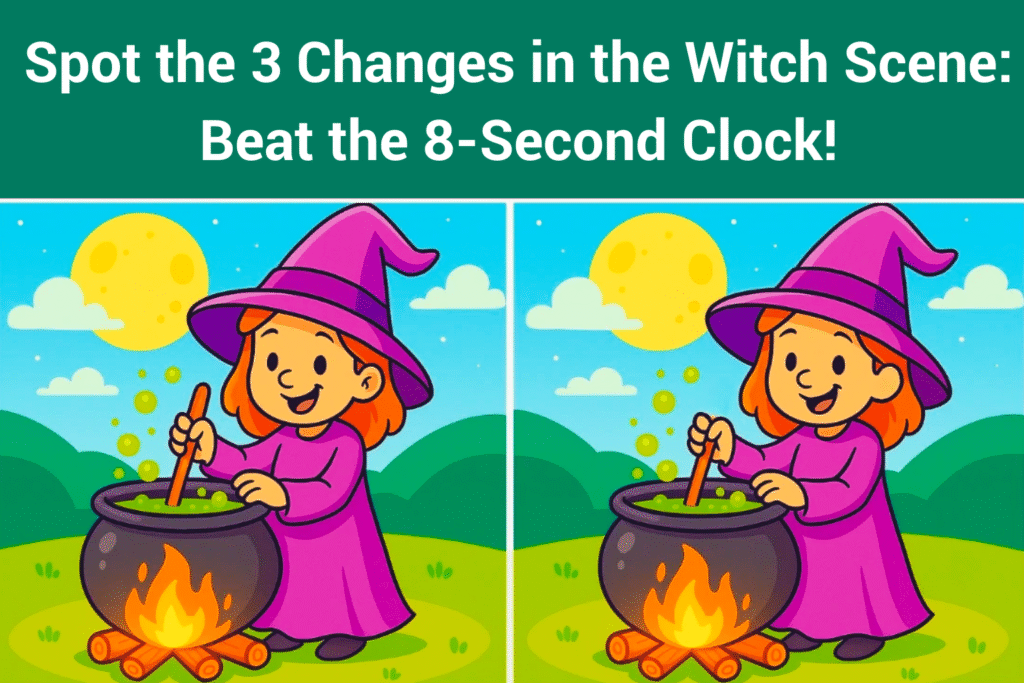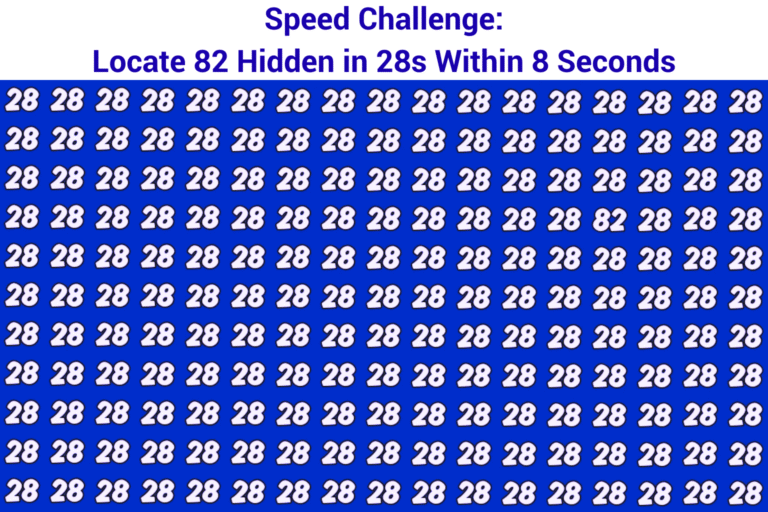
Ready to put those sharp eyes to the test? Here’s a quick and clever brain teaser designed to challenge focus, speed, and attention to detail—all in one magical scene. Picture a cute little witch standing by her bubbling cauldron, stirring up a potion under the moonlit sky. At first glance, two side-by-side images look exactly the same. But look closer—three sneaky differences are hiding in plain sight. The twist? There are only 8 seconds on the clock.
This fast-paced visual challenge is perfect for anyone who loves puzzles, enjoys a dash of whimsy, and wants a fun way to sharpen their observation skills. Whether taking a quick break or competing with friends, this bite-sized game packs a surprising punch.

How the Challenge Works
- Two images of the same witch scene are placed side by side.
- Your mission: spot exactly three differences between them.
- The time limit: just 8 seconds.
- The vibe: lighthearted, spooky-cute, and a little competitive.
What makes this game so satisfying is the way it nudges the brain to slow down and truly look. Our eyes love to skim over familiar scenes and fill in gaps automatically—this puzzle flips that habit on its head. The goal is to shift from “I see the whole picture” to “I notice the details.”
What to Look For
In spot-the-difference puzzles, the changes are usually subtle but fair. Expect tweaks like:
- Tiny shifts in shape or outline.
- Color swaps or tone changes.
- Objects added, removed, or slightly repositioned.
- Small features that appear in one image and disappear in the other.
In a witchy scene, that might mean differences in the broom or stirring stick, the brim of the hat, the potion bubbles, stars in the sky, the shape of the cauldron, or details in the grass and background. Don’t let the cuteness fool you—these little tricks are designed to stump even quick thinkers, especially under a ticking timer.
Strategy: Beat the 8-Second Clock
Want a winning edge? Try these simple techniques:
- Scan left to right, top to bottom. Compare the same zones in both images—sky, hat, face, hands, cauldron, ground.
- Look for outlines. Edges and silhouettes reveal subtle shape changes fastest.
- Check repeating elements. Items like stars, grass patches, bubbles, or buttons are prime spots for edits.
- Blink and reset. If your eyes glaze over, glance away for a second and look again. A brief reset can reveal what you missed.
Turn it into a mini game with friends or family: set a timer, count down together, and shout “Found one!” when you spot a difference. The mix of urgency and playfulness is part of the charm.
Why This Puzzle Is Good for the Brain
Beyond the fun, there’s real cognitive value here:
- Improves visual discrimination—spotting what’s different in similar patterns.
- Trains sustained attention—holding focus under mild time pressure.
- Boosts processing speed—making quick, accurate visual judgments.
- Encourages mindful seeing—slowing down and noticing what’s truly there.
It’s a low-pressure way to keep the mind nimble, and it’s suitable for all ages. Kids love the theme; adults enjoy the challenge.
The Witchy Reveal: 3 Differences You Might Have Missed
If the timer ran out and one difference kept hiding from view, here’s the solution list for this challenge:
- The stirring stick: In one image, the witch holds a simple, straight stick. In the other, a small loop wraps around it—an easy-to-miss embellishment that changes the silhouette.
- The ear: The witch’s ear is absent in one version but clearly visible in the other. Because faces draw strong attention, this is a deceptive change—your brain assumes the features are complete and moves on.
- The grass patch: A tuft of green on the left side of the scene appears in one image and disappears in the other. Background edits are classic decoys because they blend into the environment.

If you caught all three in under 8 seconds, that’s some impressive visual acuity. Missed one? Try another round with fresh eyes or swap places and challenge someone else.
Make It a Mini Ritual
A quick spot-the-difference round can be a delightful daily reset. Try it:
- As a warm-up before study or work to get your brain locked in.
- Between tasks to refresh attention without doom-scrolling.
- With kids as a playful, screen-friendly focus exercise.
- As a party icebreaker or family challenge—loser makes the snacks!
Keep the fun going by timing yourself, setting small goals (like improving by a second), or creating your own versions by sketching two similar scenes and editing a few tiny details.
Final Word: Small Details, Big Satisfaction
This witchy spot-the-difference game proves that tiny changes can deliver big entertainment. It’s short, engaging, and surprisingly rewarding—especially when the final difference clicks into place right before the timer buzzes. So the next time a whimsical challenge like this crosses your path, lean in, breathe, and trust your eyes. The magic is in the details.
Ready for another round? Set the timer to 8 seconds and see if a rematch unlocks your inner eagle eye.





